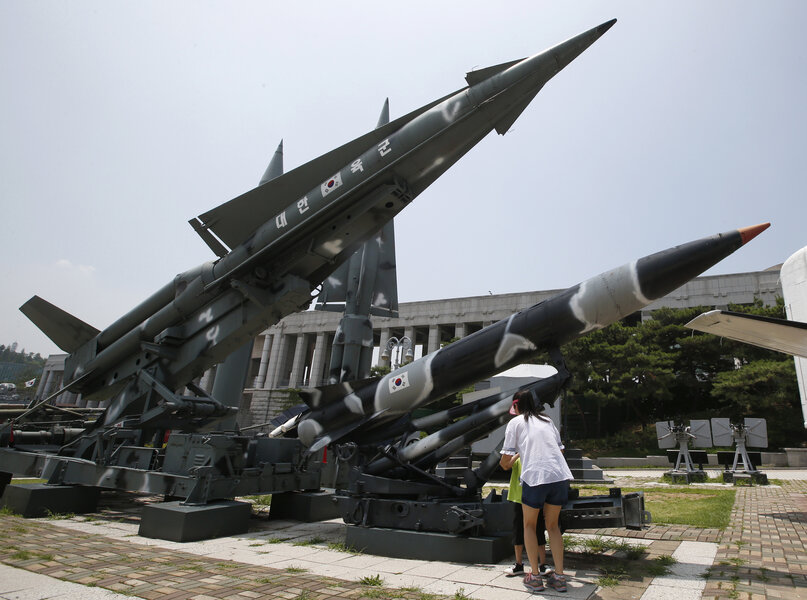Why did North Korea test fire a submarine missile?
Loading...
| SEOUL
South Korea said that North Korea on Saturday test-fired what appeared to be a submarine-launched ballistic missile off its eastern coast.
The missile was fired from a location near the North Korean coastal town of Sinpo, where analysts have previously detected efforts by the North to develop submarine-launched ballistic missile systems, said an official from Seoul's Defense Ministry, who didn't want to be named, citing office rules. He couldn't immediately confirm how far the missile traveled and where it landed.
North Korea's acquiring the ability to launch missiles from submarines would be an alarming development for rivals and neighbors because missiles from submerged vessels are harder to detect in advance. While security experts say it's unlikely that North Korea possesses an operational submarine capable of firing missiles, they acknowledge that the North is making progress on such technology.
North Korea already has a considerable arsenal of land-based ballistic missiles and is believed to be advancing its efforts to miniaturize nuclear warheads mounted on missiles through nuclear and rocket tests.
North Korea last test-fired a submarine-launched ballistic missile in April, calling it as a success that strengthened its ability to attack enemies with "dagger of destruction."
The North also test-fired a submarine-launched ballistic missile on Dec. 25, but that test was seen as failure, the South's Joint Chiefs of Staff said. The North first claimed a successful submarine-launched missile test in May last year.
The latest launch came a day after U.S. and South Korean military officials said they were ready to deploy an advanced U.S. missile defense system in South Korea to cope with North Korean threats.
Seoul and Washington launched formal talks on deploying the Terminal High-Altitude Area Defense, or THAAD, after North Korea conducted a nuclear test and a long-range rocket launch earlier this year. China, Russia and North Korea all say the THAAD deployment could help U.S. radars spot missiles in their countries.





